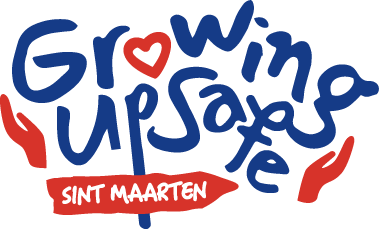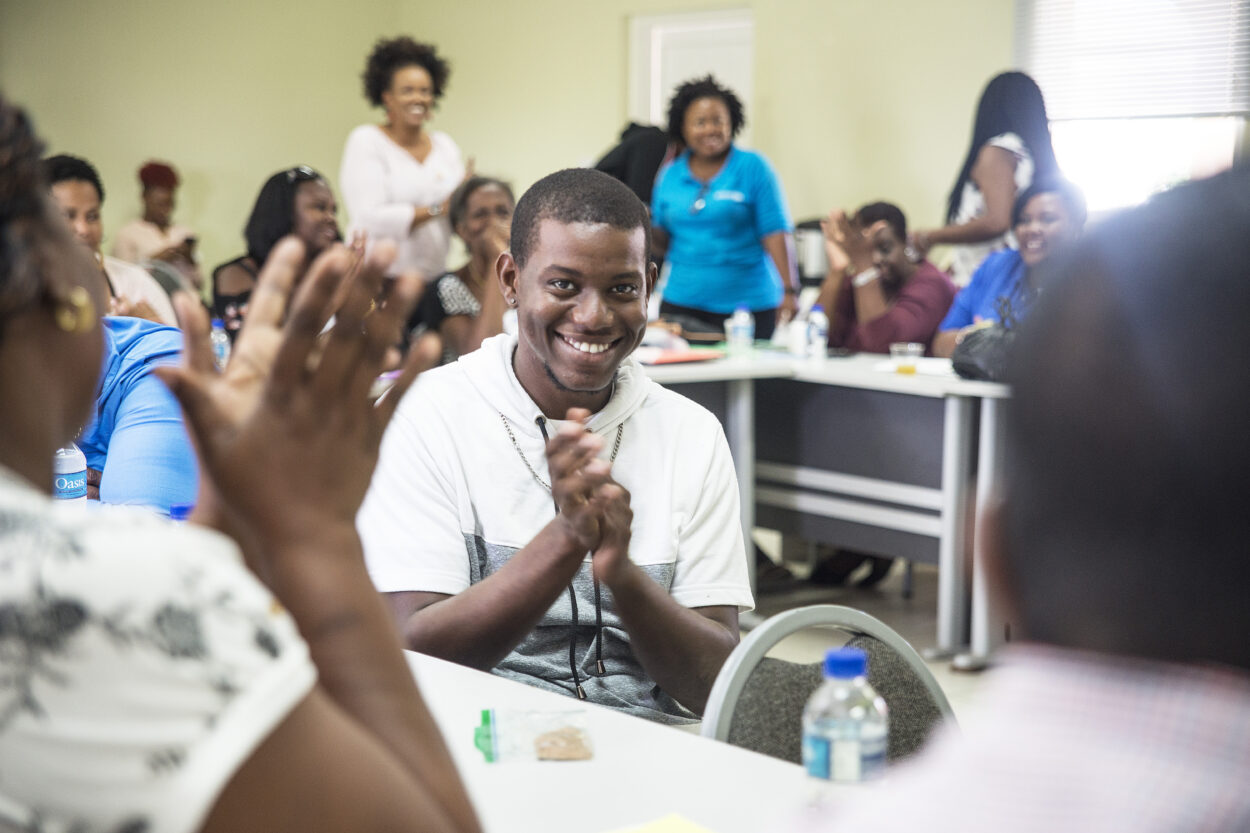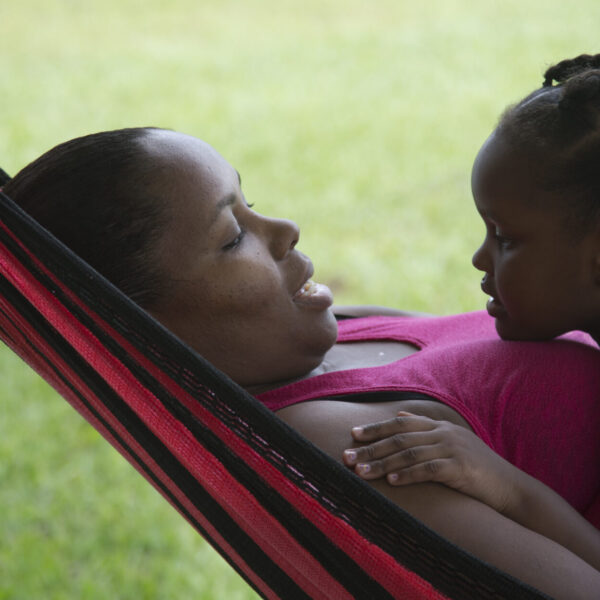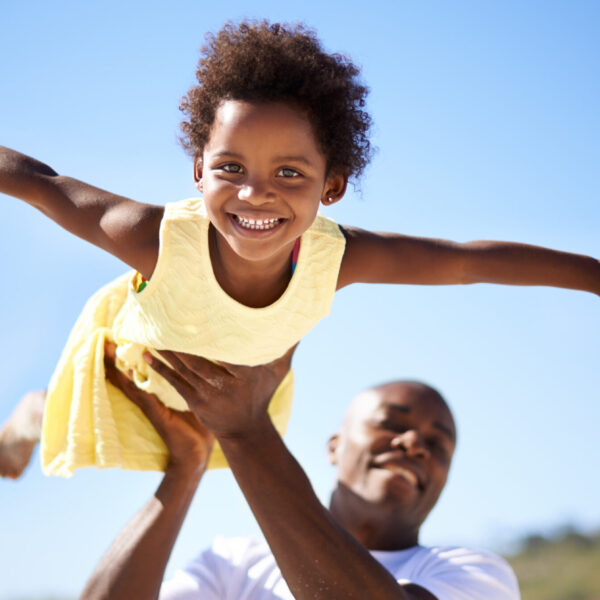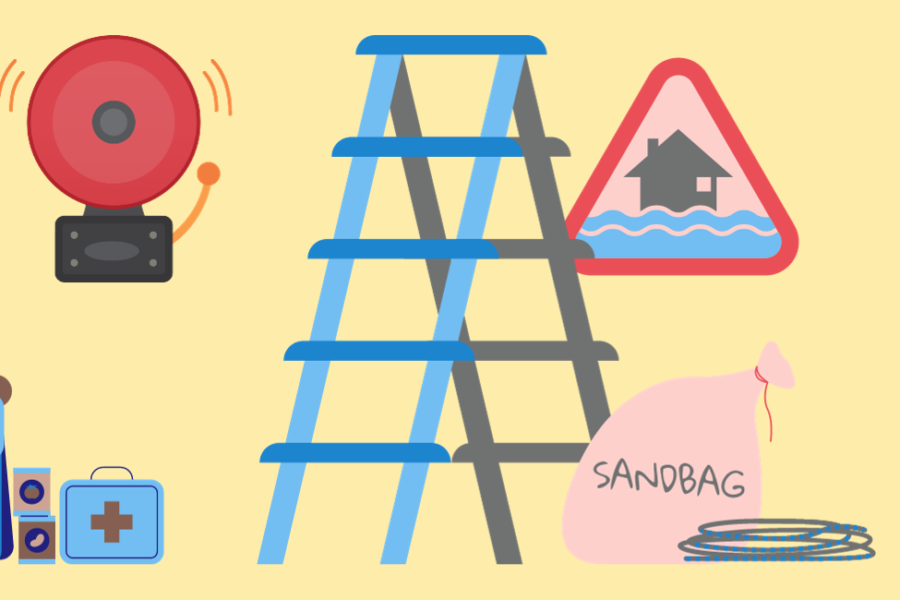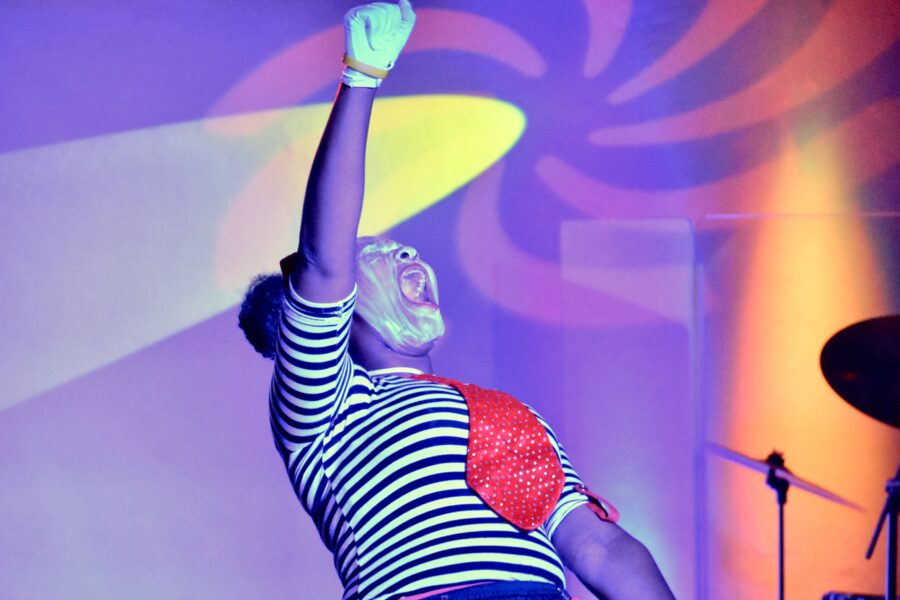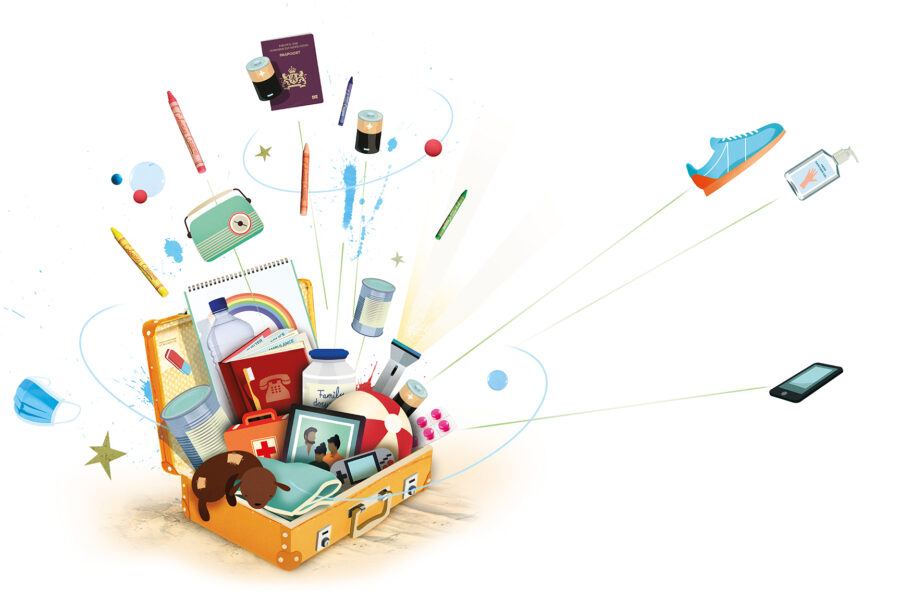Trauma-sensitive support at schools started after Irma
After the devastation of hurricane Irma in 2017, more psychosocial support was needed in schools. This led to the implementation of the Return to Happiness program, which provides tools that empowers teachers to provide psychosocial support to children. Teacher Kimberly: ‘I like that RTH teaches us to utilize arts, crafts and music to help children discuss difficult topics.’
The Return to Happiness program (RTH) uses play therapy to help children who have experienced disasters, community violence, death and other traumatic events. It encourages children to share their feelings about difficult situations through fun activities such as storytelling, games, art, music, crafts, acting, puppetry and more. We talked to Tamara Groeneveldt, program coordinator from the Student Support Services Division (SSSD). This division took the lead in helping to provide the training on Sint Maarten, in collaboration with UNICEF Netherlands. Primary school teacher Kimberley Duzong also shares her experiences with the program.
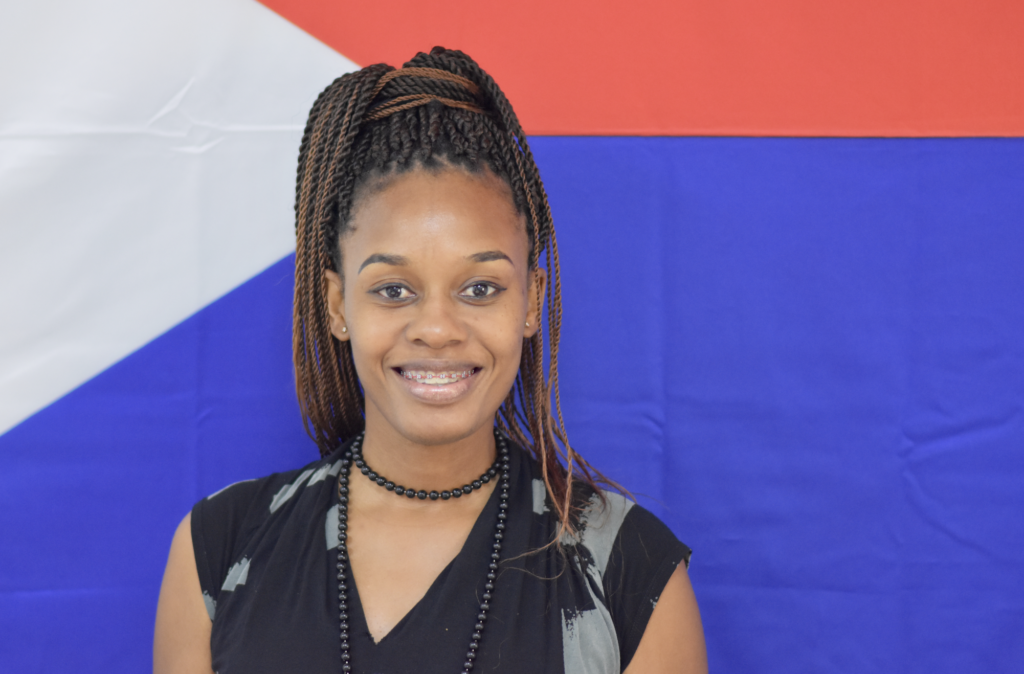
“We decided to start with a ‘Train the Trainer’ RTH program. The idea was that every primary school would select care team members or teachers from their school to be trained in RTH – and once they were familiar with the program, they would return to the school and train the remaining staff; mostly teachers and care team members,” explains Tamara. SSSD also invited representatives of day care centers, after school programs and community centers to participate in the training, to extend the reach of the program as far as possible. Community organizations and teachers from neighboring islands Saba and St. Eustatius were also invited to participate, with the support of UNICEF Netherlands.

The Train the Trainer program kicked off in April, 2018. Over 150 education professionals were trained, who in turn trained other professionals on Sint Maarten. Tamara: “The first training was a lot of fun. Despite the program being geared towards children, I think even the adult participants experienced the effectiveness of the program. It was just 6 months after the passing of hurricane Irma, and some might not have had the time or space to work through their feelings about the hurricane experience. We noticed that some participants experienced emotional trauma and expressed how nice it was to share and overcome these experiences with their peers.”
‘We would also like to teach RTH to community organizations, day-cares and other entities that work closely with children’
Storytelling encouraged
At times, children find it difficult to express themselves verbally, so they attempt to do so in other ways. As storytelling forms a large part of our Caribbean culture, this program encourages children to share their feelings through stories, in whatever way they feel comfortable. This method can help them to cope with whatever they need to work through. RTH is executed in a group setting, which allows participants to share and exchange experiences with their peers, in the hope that they will regain a sense of normalcy. The program also teaches participants to ‘red flag’ children that require further interventions, for example counseling.
Persons who successfully completed the Train the Trainers program were required to give trainings in their own schools. All schools were provided with manuals, forms and materials in a comprehensive RTH kit, that was full of fun and creative materials to facilitate interesting and exciting activities for the participants. The training and RTH Kits were funded by UNICEF Netherlands.
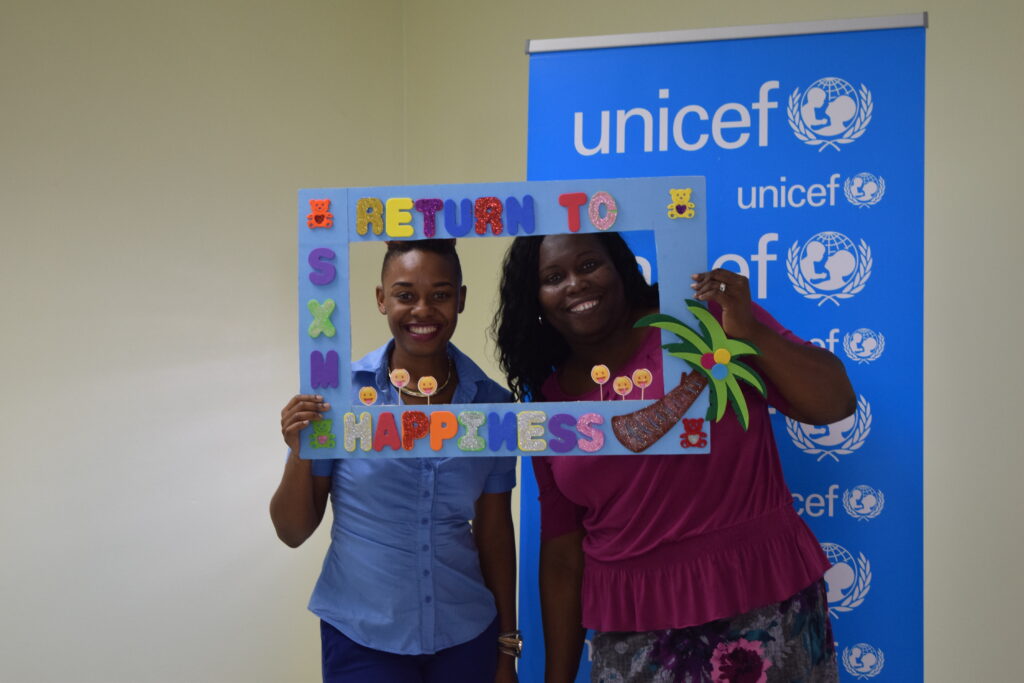
Adequately equipped
Once the RTH trainings had been provided to all primary schools, the SSSD RTH team decided to slightly amend the program to be taught at secondary level. We were looking for a psychosocial program for secondary school students that was culturally relevant. The majority of secondary schools on the island participated. As with elementary schools, persons trained were required to train the staff of their respective schools so that RTH could be implemented across the board in the event of a disaster. We also facilitated a refresher course for the first round of participants involved in the Train the Trainer training.
Our next step is a community wide roll-out: we would like to teach RTH to people in the community who would like to volunteer to assist the SSSD in a disaster, should additional support be needed. However, this effort is being hindered by the current Covid-19 pandemic. RTH is great for anyone who works with children, as it empowers you to help apply basic coping strategies to children in difficult times. Instead of feeling helpless after a disaster, which is a common feeling, many now have the tools to provide hands-on support and feel confident and adequately equipped to say: ‘I can help these kids.’”
‘This pandemic will be the perfect moment to utilize everything we’ve learned’
When the RTH program was offered to schools in the aftermath of hurricane Irma, Kimberley was one of the staff members selected to follow the training. She enjoys working with children of all ages and previously worked at daycares and an afterschool program before she became a teacher at the St. Dominic Primary School.
“As a teacher, I love to see how I can positively impact children and help them grow. I hope to become a principal someday, but first I want to gain experience as a teacher.” At school I am known to be a “strict but fair” teacher: I think structure is very important when you deal with children. Structure helps them to be successful in the future. Also, kids are more comfortable and learn more when they know what they can expect.

Third grade teacher at St. Dominic Primary School
Circle time
Initially, I did not know what to expect, and I was pleasantly surprised when the training started. It was an extensive training, but it easily kept my attention because it was very hands-on. The main goal of the RTH training is to make students feel comfortable and safe after a disaster – a hurricane or an earthquake – or a tragedy such as a death, bus crash, or other happenings that might be difficult to discuss.
It reminded me of my ‘circle time’, which happens daily before traditional classes. During circle time students are given the space to share their thoughts. Children need to talk and discuss. It is important to give them time in school to do this, as some kids might not get that opportunity at home. I also noticed that if you allow them to express their feelings prior to classes, they focus better during the rest of the day.
Inspiring
I liked that RTH teaches you to utilize arts, crafts and music to help children discuss difficult topics. A bonus is that you can do this without breaking the bank. For example, instead of buying puppets you can make your own out of socks or rocks! As long as they are silly and fun, the children will like them. I now incorporate these activities into circle time.
Another aspect of the training that I really enjoyed was that teachers from various schools were invited to join. It was nice to hear different perspectives and learn from each other. I think we should actually have more shared activities with other schools. We practiced the RTH techniques together so many teachers shared stories about their own hardships – it was inspiring to hear how my peers overcame these difficult times.
Most teachers trained
Once the training was completed, it was our turn to train teachers at our schools. That was a great way to see if we had learned and remembered enough, and luckily, I think we did a pretty good job of relaying the information we learned. Most teachers at our school have now completed the RTH training, which I think is an important asset.
This pandemic will be the perfect moment for us to utilize everything we learned with RTH. I’m already planning to incorporate more play, and sing a lot of songs together. I bet there are already fun songs out there about washing your hands – or we can make our own!”
